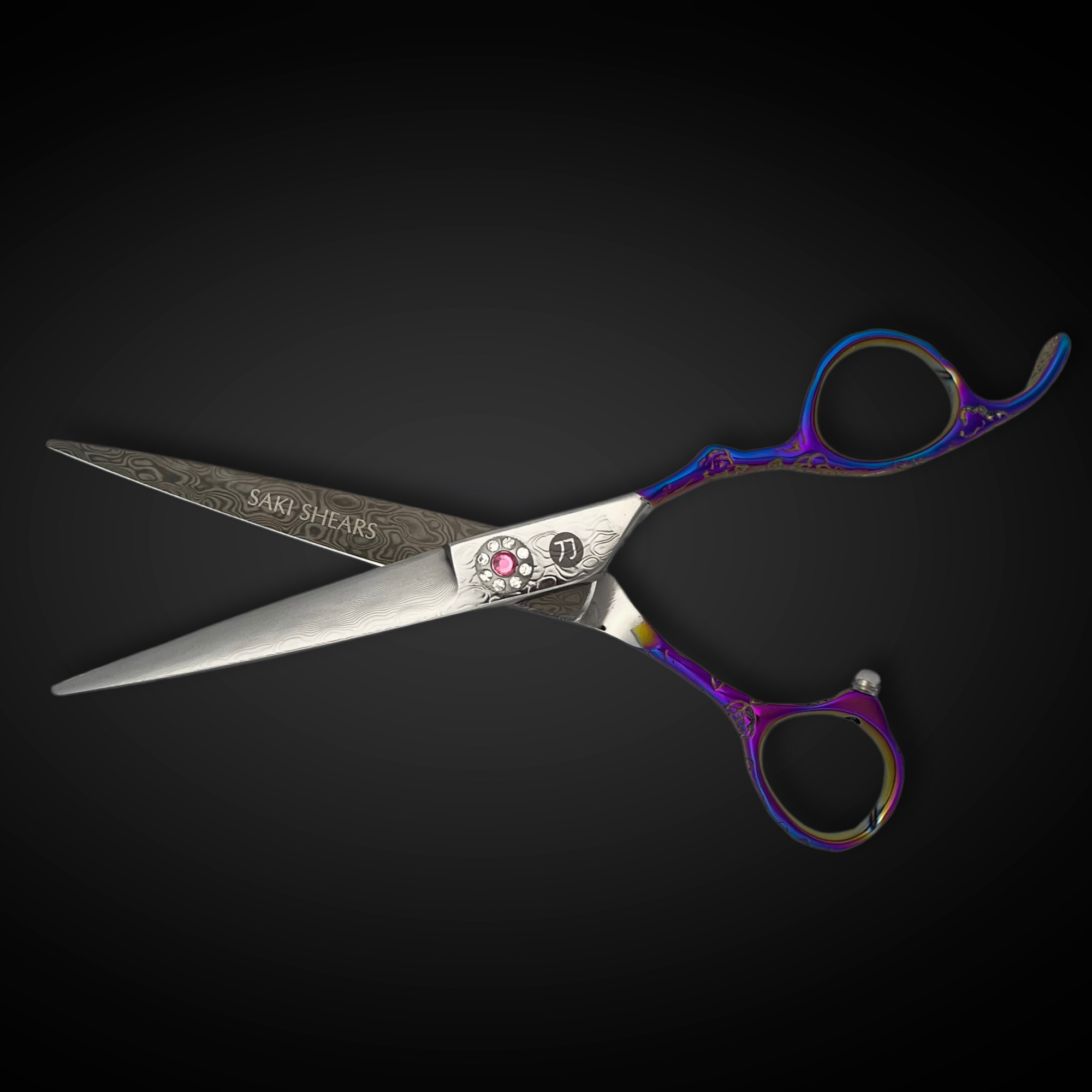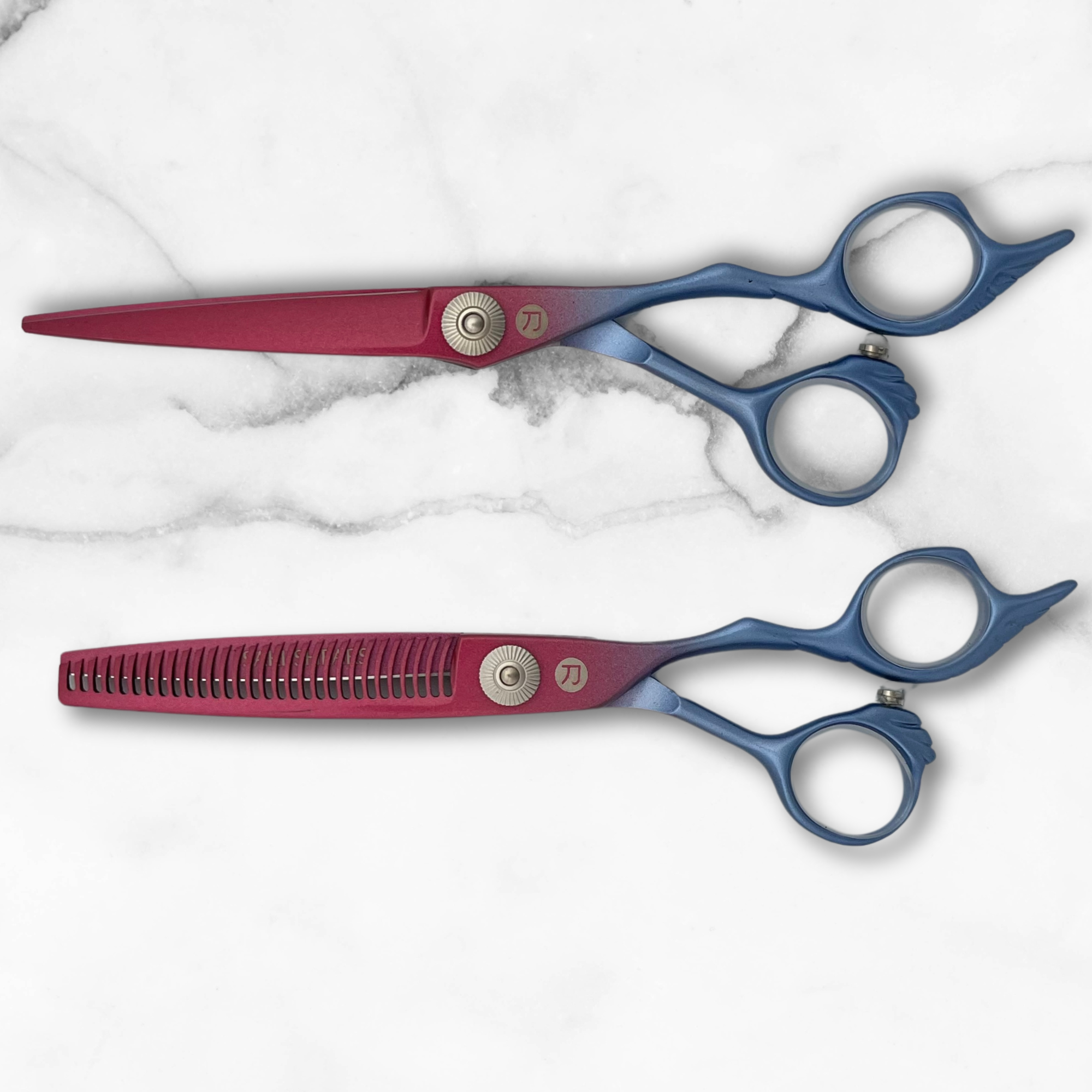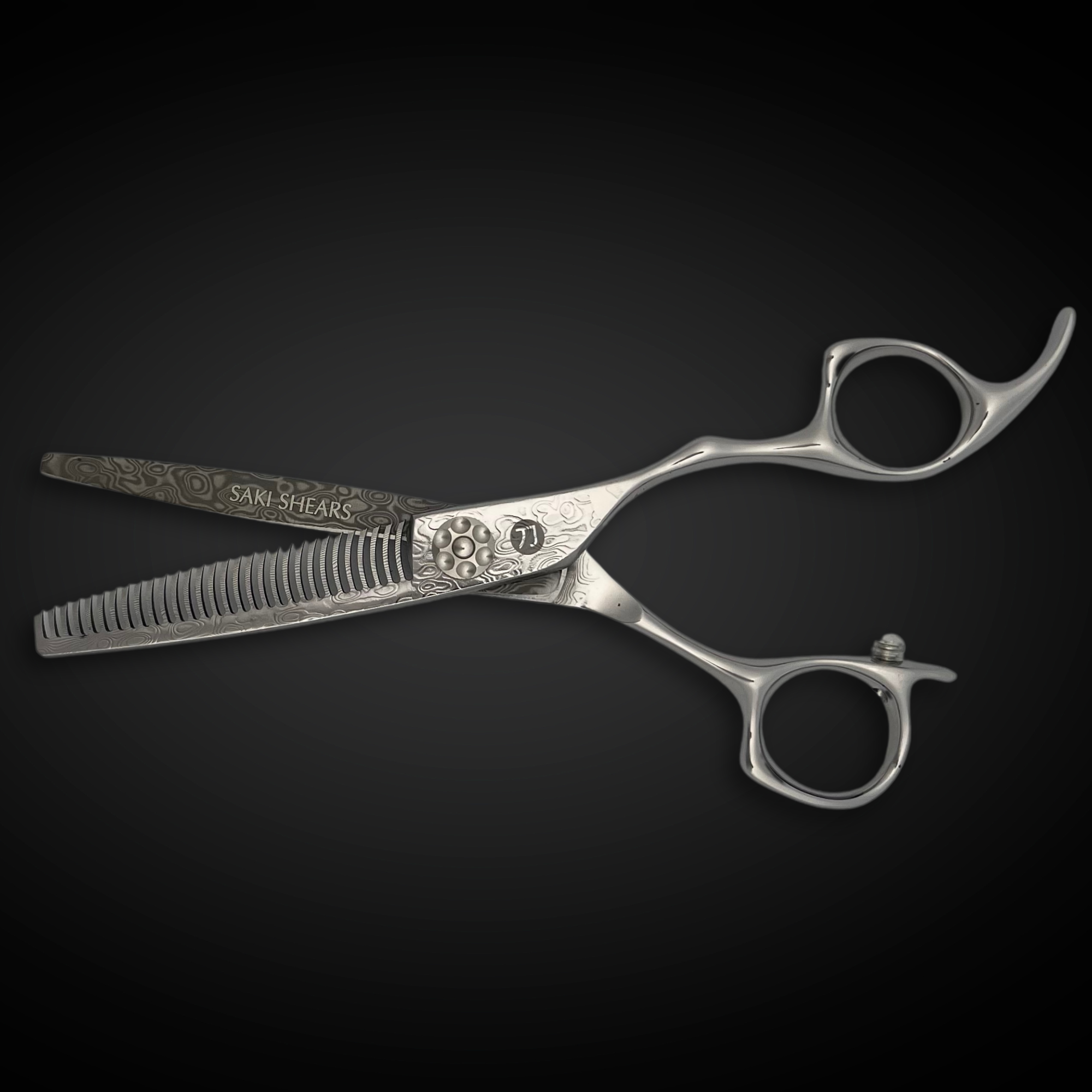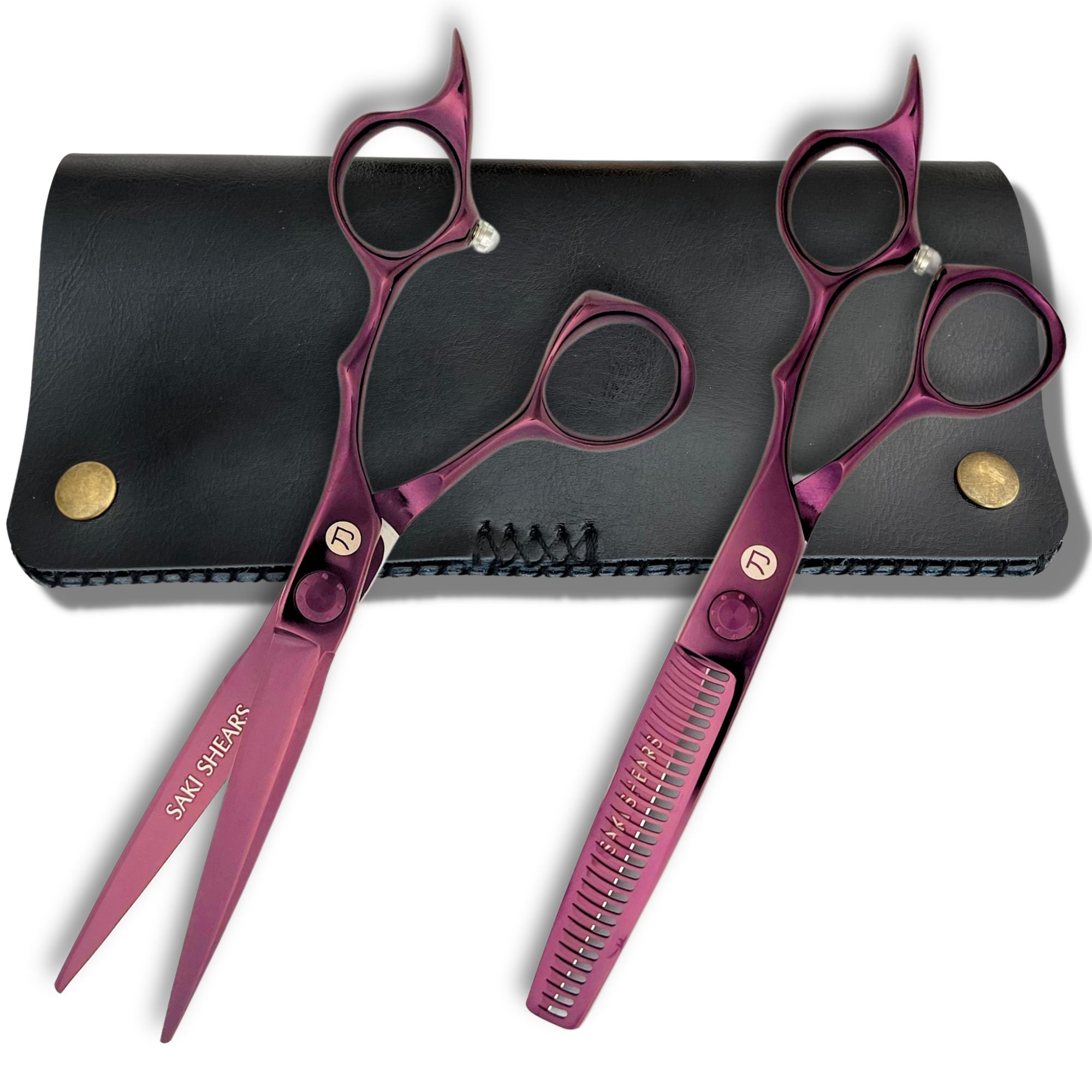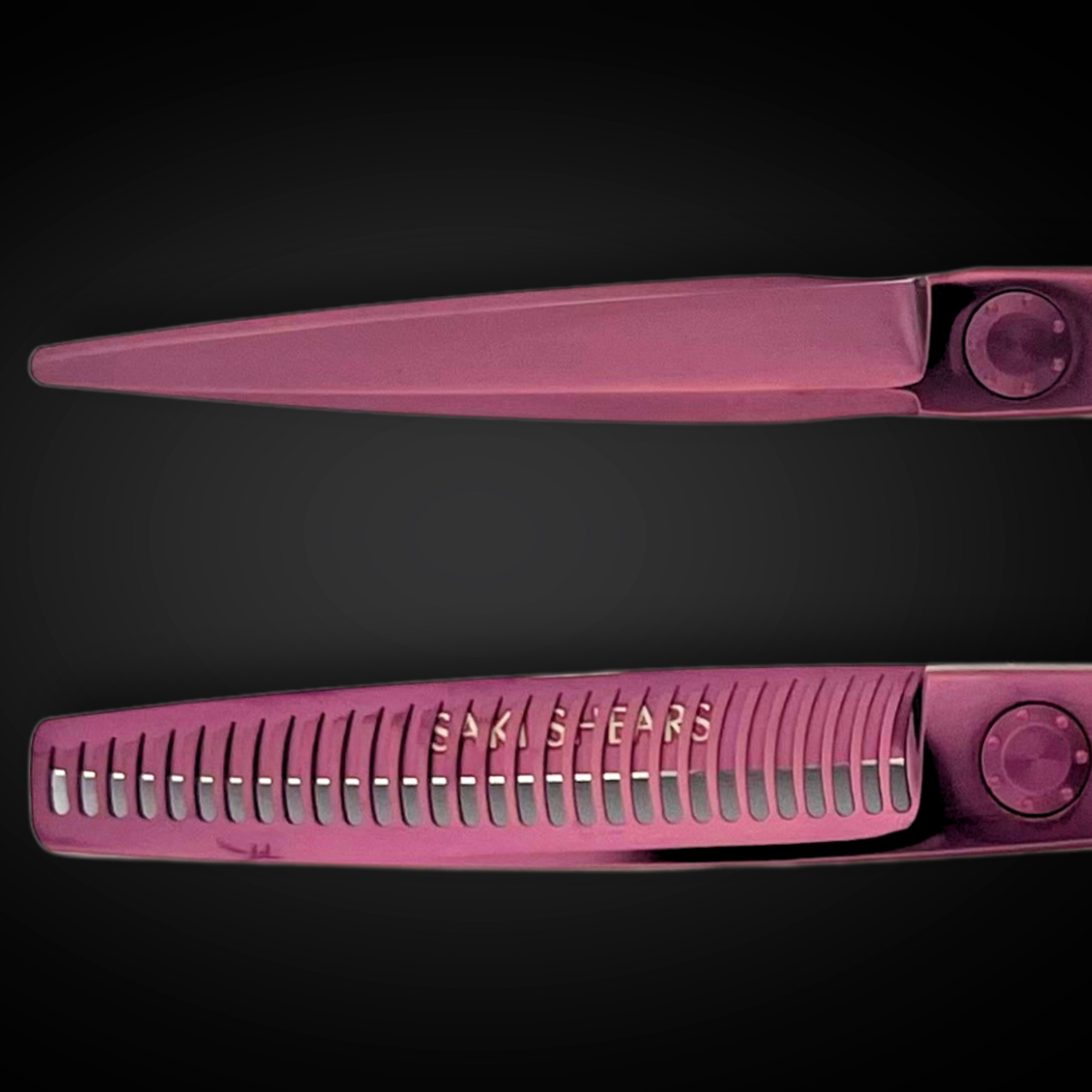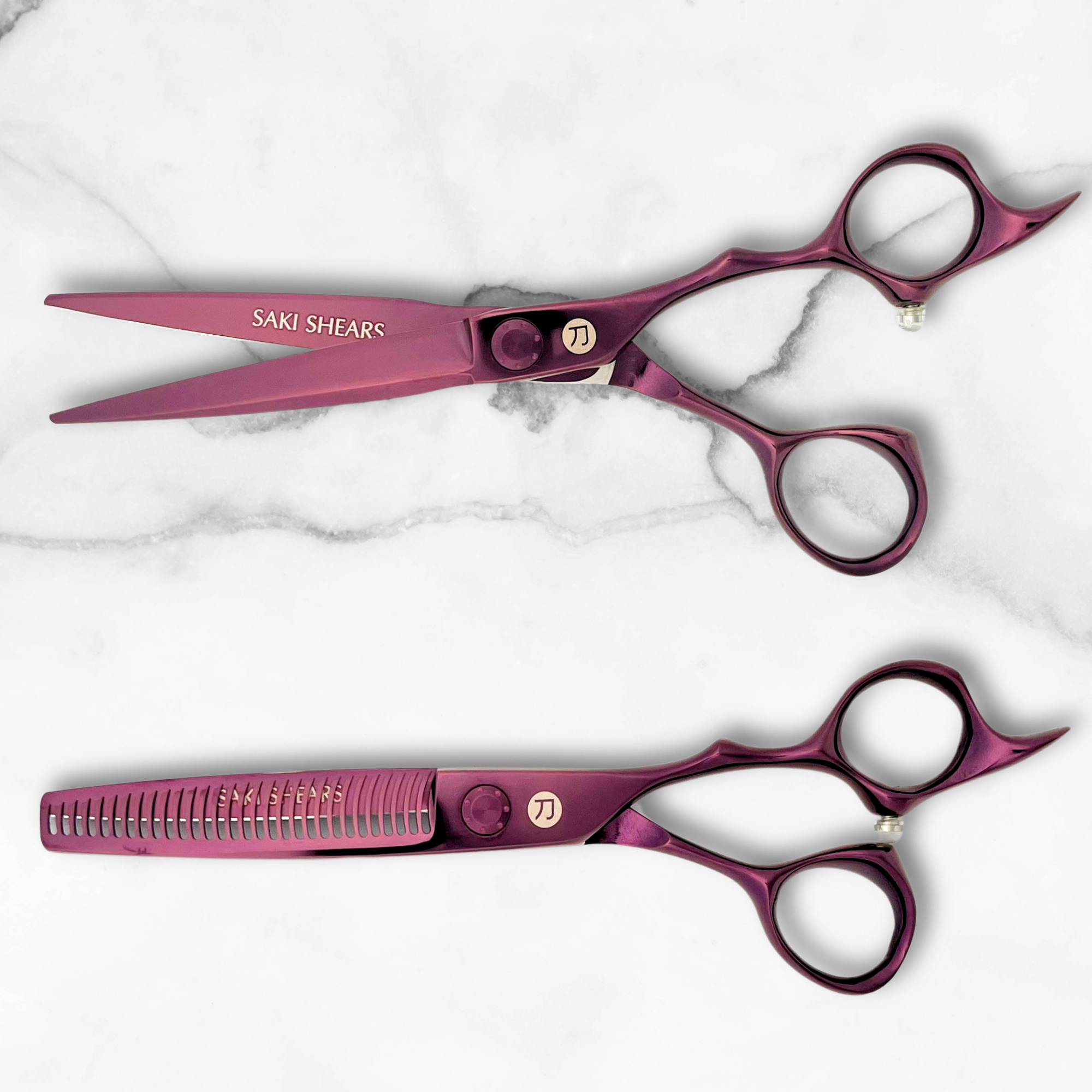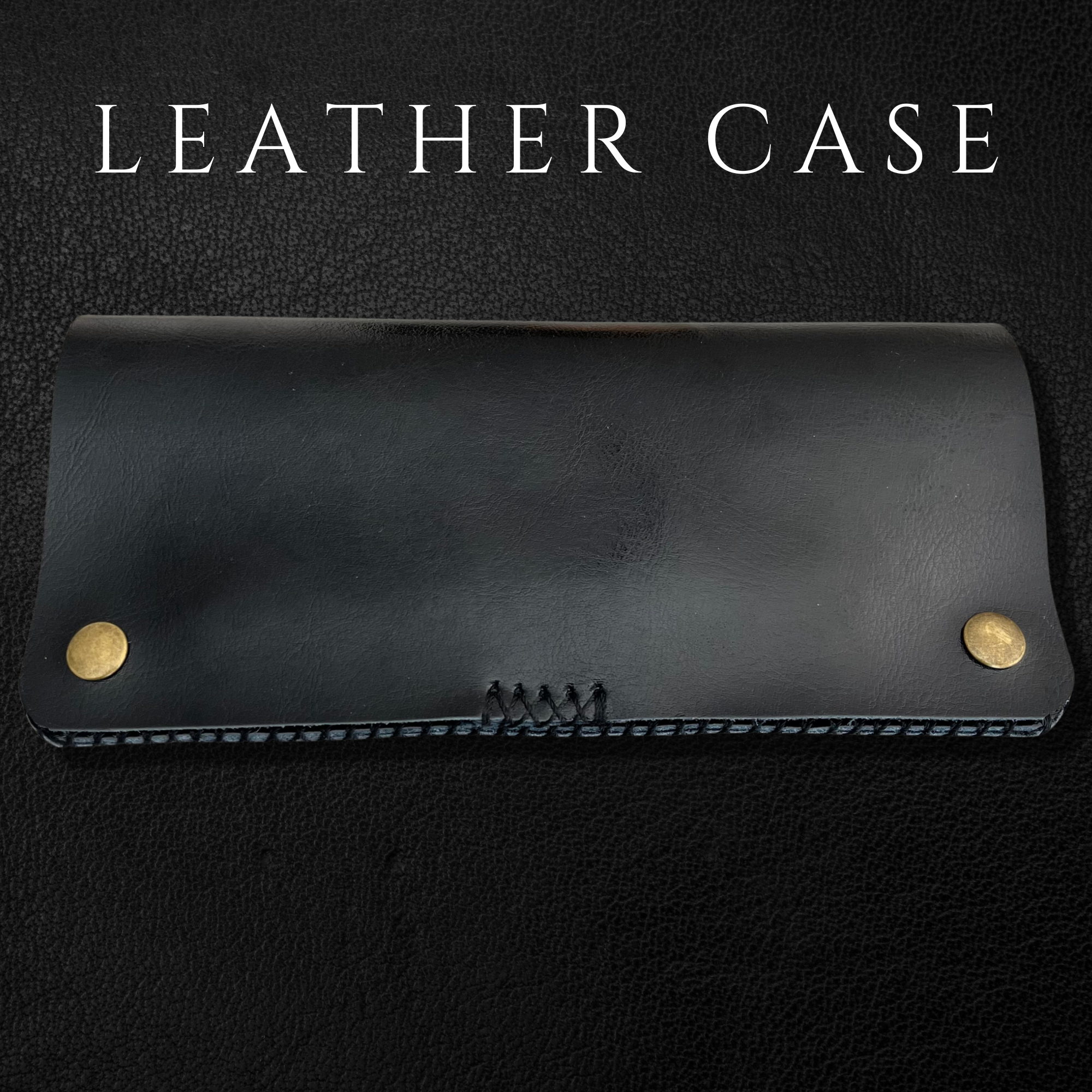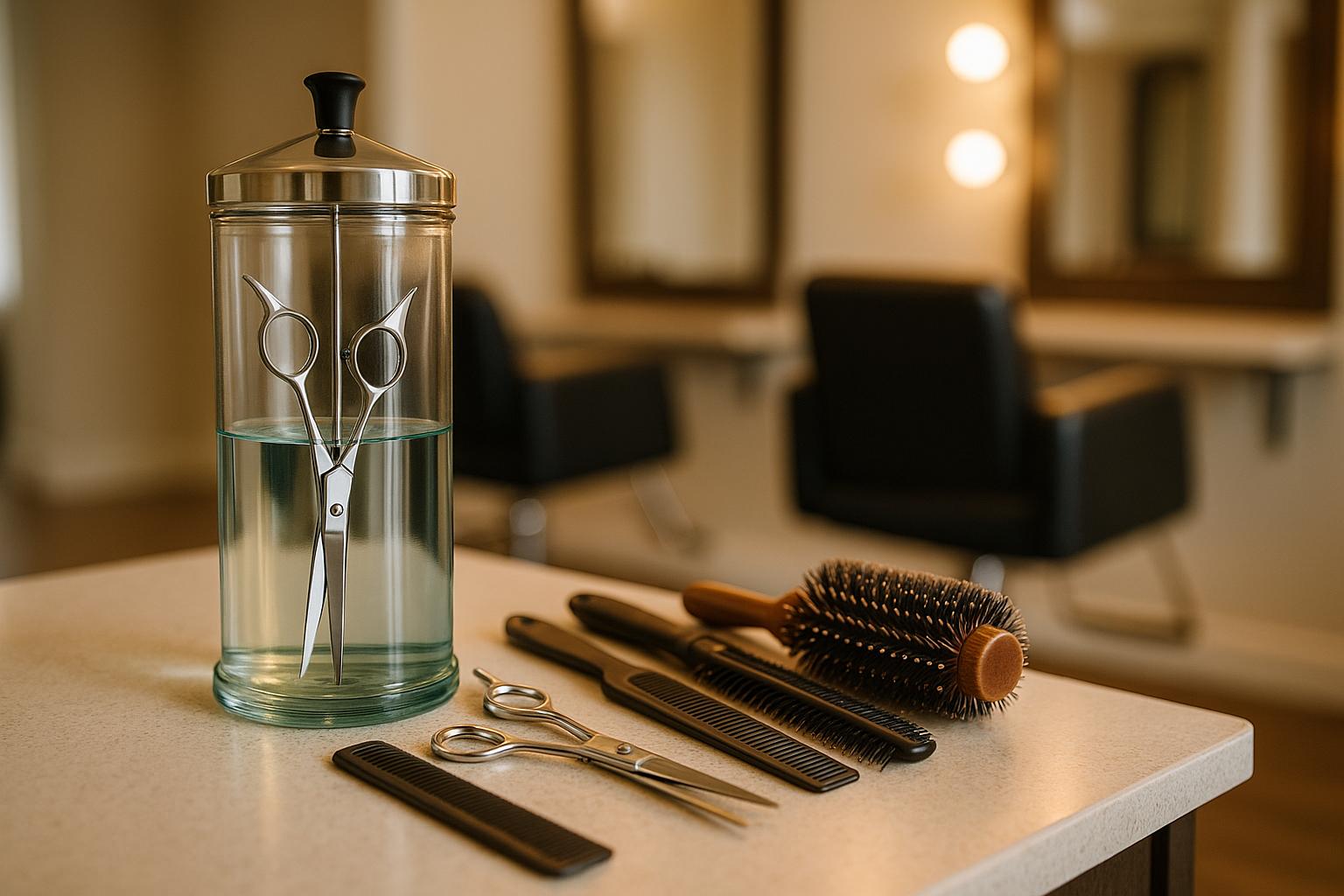Article: 6 Overdirection Cutting Basics for Stylists
6 Overdirection Cutting Basics for Stylists
Want more control over haircuts? Overdirection cutting is your answer. This technique moves hair away from its natural fall to shape weight and create custom styles. It’s perfect for sleek bobs, face-framing layers, or dynamic textures.
Here’s what you’ll learn:
- Forward Cutting: Adds weight to the back for styles like graduated bobs.
- Backward Cutting: Focuses weight toward the front for softer, face-framing layers.
- Fixed Guides: Create bold, structured shapes with stationary cutting points.
- Moving Guides: Blend layers seamlessly for natural transitions.
- Key Tools: Longer shears (6.5"+) and ergonomic designs improve precision and comfort.
Quick Tip: The angle of overdirection changes the weight distribution - steep angles for dramatic effects, shallow for subtle transitions.
Ready to refine your skills? Let’s break it all down step by step.
What Makes Overdirection Work
Definition and Purpose
Overdirection involves moving hair away from its natural fall to manage weight distribution and shape the haircut. Unlike basic elevation techniques, it focuses on selecting specific angles to control how the hair falls once it's cut. This technique sets the stage for the essential rules that make overdirection effective.
Main Rules and Methods
The success of overdirection depends on picking the right angle and direction. These choices shape the haircut's graduation and layering, ultimately influencing the style's overall movement and structure.
Hair Cutting Foundations - Over Direction
Forward and Backward Cutting Methods
Mastering forward and backward cutting techniques is key to achieving precise weight distribution in hairstyles. These approaches determine how weight is balanced after the cut, helping stylists create specific looks. Building on foundational principles, these methods refine how angles can shape weight and style.
Forward Cuts for Back Weight
Forward overdirection concentrates weight at the back of the head, making it ideal for styles like graduated bobs and layered cuts with a back-heavy focus. To execute this method effectively, position yourself behind the client and section the hair neatly.
Here’s how to perform forward cuts:
- Set your cutting line: Start with a clean horizontal parting at the nape.
- Pull hair forward: Direct sections forward at a 45-degree angle.
- Maintain tension: Hold the hair firmly between your fingers.
- Cut with precision: Use sharp shears held parallel to the cutting line.
Backward Cuts for Front Weight
Backward overdirection shifts weight toward the face, perfect for face-framing layers and modern shags. This technique requires careful attention to angles and elevation to achieve the desired weight distribution.
Steps for backward cutting:
- Prepare sections: Create clean vertical partings.
- Direct hair backward: Pull sections at a 15-30 degree angle.
- Check natural fall: Periodically release sections to evaluate weight placement.
- Ensure balance: Work symmetrically on both sides.
Unlike forward cutting, this method emphasizes the face, creating a softer, more modern look. Using ergonomic shears can improve control, especially for detailed face-framing.
| Cutting Direction | Best For | Key Features |
|---|---|---|
| Forward | Graduated bobs, Back-heavy styles | Strong back perimeter, Clean graduation |
| Backward | Face-framing layers, Modern shags | Enhanced front movement, Softer framing |
The angle of overdirection plays a big role in weight distribution. Steeper angles result in more dramatic shifts, while shallower angles create smoother, subtler transitions.
Fixed vs. Moving Guide Systems
Understanding the difference between fixed and moving guide systems is key to mastering precise overdirection cuts. Each approach serves a distinct purpose: one emphasizes bold, structured designs, while the other focuses on creating smooth, natural transitions. Let’s break down how these systems work and what they require.
Fixed Guides for Defined Shapes
Fixed guide systems use stationary anchor points to ensure consistent weight distribution throughout the haircut. This method is perfect for achieving bold, geometric shapes with sharp, defined weight lines.
Andrew Carruthers from Sam Villa highlights the importance of pre-planning three key weight points for successful fixed guide cutting. This preparation helps maintain the structural integrity of the style.
Key tips for fixed guides:
- Use longer shears (6.5 inches or more) for better precision.
- Keep sections clean and monitor the guide's visibility at all times.
- Maintain an elevation of 30° or less during the cut.
Redken's education team also emphasizes that stationary guides work best when kept below a 30° elevation.
Moving Guides for Softer Shapes
Moving (or traveling) guide systems are ideal for creating smooth transitions and natural layers. These guides allow for more flexibility, resulting in softer, more blended shapes.
Recent data shows that 73% of modern A-line bobs incorporate hybrid guide systems. Saki Shears suggests alternating between 14° and 26° bevel angles to achieve seamless transitions.
Here’s a quick comparison of the two systems:
| Guide Type | Best For | Technical Requirements |
|---|---|---|
| Fixed | Geometric shapes, sharp weight lines, precise graduation | 6.5"+ shears, below 30° elevation |
| Moving | Soft layers, natural movement, blended transitions | Variable angles, flexible elevation |
| Hybrid | Modern A-line bobs, textured cuts | Combined techniques, multiple elevations |
Interestingly, 68% of academy instructors now focus on teaching combination techniques that merge both stationary and traveling guide systems.
When working with moving guides, maintain consistent tension and cross-check sections to ensure balanced weight distribution. This attention to detail is crucial for achieving a polished, professional result.
High-Level Cutting Techniques
Once you've mastered the basics, advanced cutting methods can help fine-tune weight distribution and add movement to your styles. These techniques are all about creating shapes and textures that stand out.
Cutting to Visual Points
This method involves connecting key reference points throughout the haircut to achieve balance and symmetry, especially for geometric or asymmetrical styles.
Here’s how it works:
- Identify the key points that define the haircut's shape.
- Use clean, precise cuts to connect these points.
- Check your work from different angles to ensure everything lines up.
For this technique, it's crucial to use sharp, precise shears to maintain control and accuracy, especially when working on intricate details.
Triangle Method for Texture
While visual point cutting focuses on symmetry, the triangle method is all about adding layers and movement. By dividing hair sections into three parts, you can create a style with natural flow and depth.
To get the best results, use professional-grade Japanese stainless steel shears. These tools provide the precision needed for clean cuts while maintaining the style’s overall structure and texture.
Best Tools for Overdirection
Achieving success with overdirection cutting requires not just skill but also the right tools. High-quality tools ensure precision, enhance stylist comfort, and help reduce strain during intricate cuts.
Why the Right Tools Matter
Using top-notch Japanese steel shears gives you the control and accuracy needed for advanced techniques. When properly cared for, these tools can last well beyond the typical 4–5 years, reaching up to 12–15 years.
Here are some key features to look for when choosing tools for overdirection cutting:
| Feature | Benefit | Impact on Technique |
|---|---|---|
| Blade Material | Japanese steel delivers clean cuts | Prevents hair damage and boosts precision |
| Ergonomic Design | Reduces hand fatigue | Improves control for intricate angles |
| Adjustable Tension | Customizable cutting resistance | Ensures consistency across hair types |
| Blade Length | Technique-specific (5.5″–7″) | Impacts maneuverability and control |
Considering these factors, Saki Shears offers tools specifically designed to meet the needs of overdirection cutting.
Saki Shears Product Guide
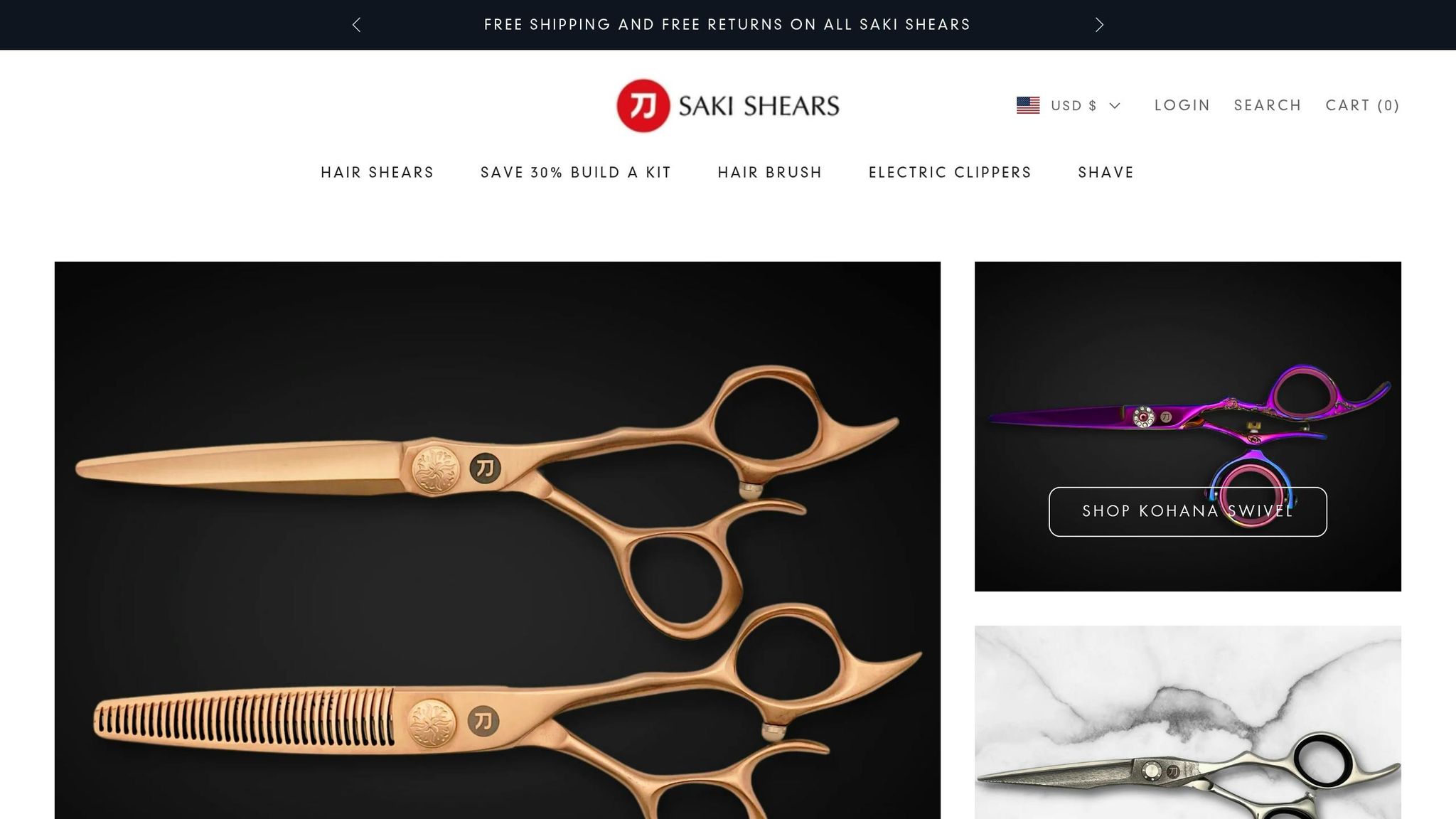
Saki Shears provides a range of tools made from premium Japanese steel, including VG-10 models, tailored for different overdirection techniques. These tools are built to deliver the precision required for advanced styles:
- Basic Overdirection Cuts: Entry-level shears priced at $124.99 combine precise cutting with an ergonomic design for comfort.
- Advanced Geometric Cuts: Mid-range shears starting at $185.00 feature adjustable tension systems, ideal for handling complex patterns.
- Precision Detail Work: High-end shears, starting at $285.00, crafted with Damascus steel, offer unmatched control for detailed work.
Every Saki Shears product includes a lifetime warranty, ensuring reliability for professional use. Their combination of premium materials and ergonomic design makes them an excellent choice for the detailed demands of overdirection cutting.
Summary
Mastering overdirection cutting involves developing technical skills and using the right tools. The six core techniques - forward cuts, backward cuts, fixed guide methods, moving guide methods, visual point cutting, and the triangle method - serve as a solid starting point for more advanced styles.
High-quality shears are crucial for achieving precision and control. Tools like those from Saki Shears are designed to improve accuracy and ensure consistent results across all methods.
Overdirection cutting is a step-by-step process. Begin with the basics and gradually work up to more intricate patterns. Regular practice with reliable tools helps build muscle memory and ensures steady improvement.
To round out your toolkit, choose shears that suit your cutting style. Saki Shears offers professional-grade options ranging from $124.99 to $285.00. With proper care, these tools last longer, making them a worthwhile choice for professionals aiming to excel in overdirection cutting.
FAQs
What is the difference between overdirection cutting and basic elevation techniques in hairstyling?
Overdirection cutting and basic elevation techniques are both essential concepts in hairstyling, but they serve different purposes. Overdirection cutting involves moving the hair away from its natural fall or position to create specific shapes, lengths, or volume. This technique is commonly used to add dramatic layers, length variations, or unique angles to a haircut.
On the other hand, basic elevation techniques focus on lifting the hair at a particular angle (like 45° or 90°) to control weight and create balanced layers. While elevation primarily determines how much weight is removed, overdirection influences the overall shape and direction of the haircut. Mastering both techniques allows stylists to achieve precision and creativity in their designs, especially when paired with high-quality tools like professional-grade shears crafted from premium Japanese steel.
What are the advantages of using fixed and moving guide systems in overdirection cutting?
Fixed and moving guide systems each offer unique benefits in overdirection cutting, depending on the desired hairstyle and technique. A fixed guide provides consistency and precision, making it ideal for creating uniform layers and balanced shapes. On the other hand, a moving guide allows for more flexibility and creativity, enabling stylists to adjust as they cut to achieve softer, more dynamic looks.
Understanding when to use each system can help you tailor your approach to different clients and styles. For optimal results, having high-quality tools like professional-grade shears ensures better control and accuracy during the cutting process.
Why are the right shears essential for mastering overdirection cutting techniques?
Using the right tools, especially professional-grade shears, is crucial for mastering overdirection cutting techniques. High-quality shears ensure precision, allowing stylists to create clean and consistent cuts, which is essential for achieving the desired shape and movement in overdirection styles.
Additionally, ergonomic and durable shears, such as those crafted from premium Japanese steel, provide comfort during extended use and maintain their sharpness over time. This not only enhances the stylist's control but also ensures the best results for clients, making the choice of tools a key factor in perfecting these techniques.

